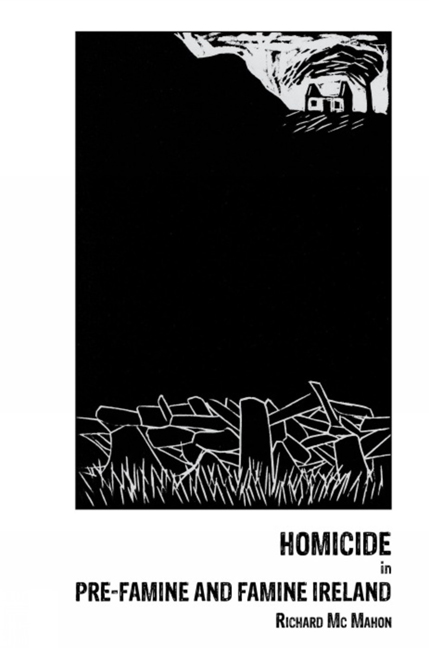Book contents
- Frontmatter
- Dedication
- Contents
- List of tables and figures
- Preface
- ‘A violent society’?
- 1 Homicide rates in Ireland, 1801–1850
- 2 ‘Do you want to pick a fight out of me?’: Homicide and personal relations
- 3 ‘Sending them to heaven’: Homicide and the family
- 4 ‘The tranquillity of a barrel of gun powder’: Homicide and land
- 5 ‘The madness of party’: Homicide and sectarianism
- Conclusion
- Appendix one: Methods and sources
- Appendix two: Homicide and motive
- Bibliography
- Index
5 - ‘The madness of party’: Homicide and sectarianism
- Frontmatter
- Dedication
- Contents
- List of tables and figures
- Preface
- ‘A violent society’?
- 1 Homicide rates in Ireland, 1801–1850
- 2 ‘Do you want to pick a fight out of me?’: Homicide and personal relations
- 3 ‘Sending them to heaven’: Homicide and the family
- 4 ‘The tranquillity of a barrel of gun powder’: Homicide and land
- 5 ‘The madness of party’: Homicide and sectarianism
- Conclusion
- Appendix one: Methods and sources
- Appendix two: Homicide and motive
- Bibliography
- Index
Summary
Such is […] the madness of party that Mohammedans and Jews are not more adverse to each other, nor actuated by a more persecuting spirit than the opposing parties in this country.
The first half of the nineteenth century, following the Act of Union, is often seen as a time of increased and increasing sectarian tensions in Ireland. This rise in sectarian feeling was both reflected in and extenuated by a variety of different developments. To begin with, there was the legacy of the political upheavals of the 1790s, culminating in the 1798 Rebellion. Despite the avowed anti-sectarianism of many of those involved, the 1790s witnessed an upsurge in sectarian animosity and violence which left Irish society ‘more bitterly polarized than before’. It also contributed, in the longer term, to a ‘legacy of militant Catholic nationalism and Protestant loyalism’ in the country. The latter being most clearly expressed in the form of the Orange Order, an oath-bound society dedicated to the maintenance of Protestant ascendancy in Ireland, and the former finding expression through organisations such as the Defenders and, later, the Ribbonmen.
The issue of Catholic emancipation also came increasingly to dominate the political agenda. Although the distinct possibility or even expectation of Catholic emancipation had been raised before the Act of Union, it was thwarted in the early decades of the nineteenth century and was only granted under a considerable degree of popular and political pressure in 1829. In the intervening period there was an often acrimonious campaign for emancipation. In particular, the highlighting of Catholic grievances by the Catholic Committee during the first two decades of the century and, perhaps more importantly, the emergence in the 1820s of popular Catholic nationalism as a significant organised force in Irish political life, in the shape of the Catholic Association, served to emphasise sectarian divisions. The 1820s, therefore, witnessed, as Connolly puts it, a ‘sharp resurgence of sectarian hostility, affecting all levels of Irish society’.
Some of the activities undertaken at this time by the major church bodies in Ireland, Anglican, Catholic and Presbyterian, also seem to have increased tensions between the Catholic and Protestant communions. The renewed vigour, enthusiasm and organisational discipline of both the Catholic Church and the Church of Ireland served to heighten the tension between them.
- Type
- Chapter
- Information
- Homicide in pre-Famine and Famine Ireland , pp. 126 - 157Publisher: Liverpool University PressPrint publication year: 2013



